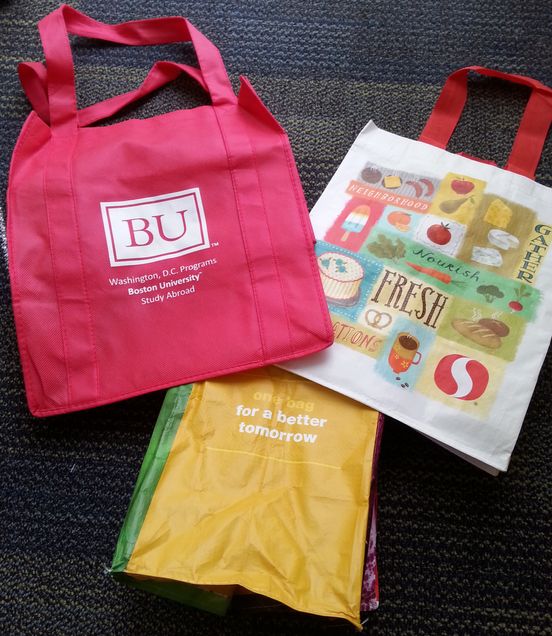Paula Garcia
5 Grocery Shopping Tips for the Unpaid Intern in DC
By Paula Garcia
Spring 2015
- Choose a grocery store that fits your needs: Safeway and Giant are both easily accessible from the Debonair. I personally prefer the Safeway in Adams Morgan because it’s only a 15 minute walk or you can take the Circulator, which costs $1 each way, while the Giant is either a 30 minute walk or two stops north on the metro and costs $2.50 each way. However, for people who like frozen meals or specific brand names, Giant is the better option. Either way, I recommend you choose the one that meets your needs and stick with it for the semester.
- Once you have chosen the grocery store, apply for a rewards card: both at Safeway and Giant, the rewards cards can actually make a difference in the total cost of your groceries. I have had final totals decrease by up to $20 because of the rewards card. If you are a committed bargain shopper, Safeway also gives you the option to link-up rewards and savings specials to your card based on the products you are most likely to buy.

The Rewards Cards or Member Cards are free and will provide you with tons of savings in the long run. Photo by Paula Garcia.
- Always check out the weekly specials: you can find them online or in any of the Sunday newspapers in the area. They are extremely helpful when planning your shopping list because they can help you determine which items to be on the lookout for and which ones to ignore. For example, on the Safeway Weekly they advertise certain items each week that if you buy on Friday are only $5
- Stock up on the essentials: on your first grocery shopping day, prepare to spend a little more than usual and stock up on essential items such as:
-Pasta: any type that you feel comfortable cooking and eating more than once a week.
-Rice: I recommend white rice since it is often the easiest to cook and gives you more for your buck, but you can buy brown rice or couscous too.
-Breakfast foods: both cereal and oatmeal are good fast and versatile breakfast options.
-Can goods: I only recommend buying canned beans and tuna if you like these food items and know you will make meals out of them.
-Frozen veggies: these are a better option than canned veggies and are often cheaper for the amount you are getting – I recommend buying mixed veggie bags or bags of your favorite vegetable.
-Condiments: peanut butter, jam, butter (either in sticks or squeezable butter as spray cans often don´t last long and waste much of the product), oil (olive oil works best), seasoning (salt, pepper, or any other type that you are sure you will use), honey, mayonnaise, and ketchup.
-Reusable Bags: DC taxes plastic bags and you are charged five cents per bag. That cost adds up so just buy reusable ones.

Reusable bags are a most in D.C. Not having one will end up being super pricey as plastic bags have a fee of 5 cents, which may not seem like a lot, but over time it adds up. In addition, you are helping the environments. Photo by Paula Garcia.
- Make a list of the items you need to buy: try to vaguely plan what ingredients you will need to make a variety of meals. I suggest buying bread, at least three different varieties of fresh fruits that will last (apples, oranges, and unripe bananas are a good option, but also look for seasonal specials like tangerines, strawberries, kiwis, etc.), tomatoes, onions, spinach or lettuce, pasta sauce, dairy, and protein. For vegetarians, I would stick with beans, frozen meat alternatives, or tofu and for non-vegetarians I would recommend eggs, chicken, meatballs, or ground beef. Fish is expensive in DC so I would avoid it whenever you can. These ingredients will allow you to make a wide range of dishes from pasta to salads. Following this rule, I spend an average of $95-$100 for groceries that last me 2-3 weeks.
Paula Garcia is a senior studying journalism and biological anthropology currently interning at Voice of America´s Spanish Division.


